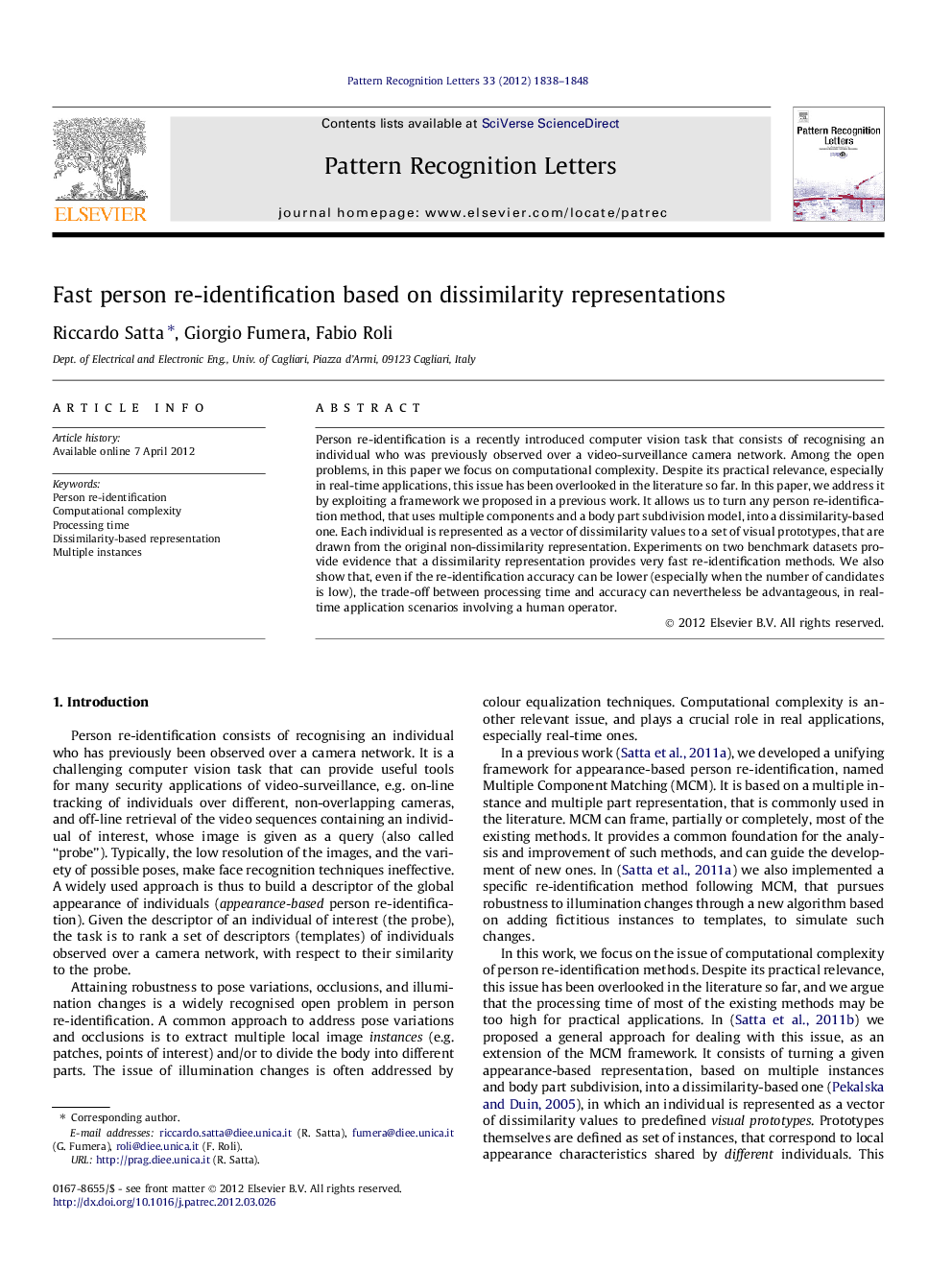| Article ID | Journal | Published Year | Pages | File Type |
|---|---|---|---|---|
| 534625 | Pattern Recognition Letters | 2012 | 11 Pages |
Person re-identification is a recently introduced computer vision task that consists of recognising an individual who was previously observed over a video-surveillance camera network. Among the open problems, in this paper we focus on computational complexity. Despite its practical relevance, especially in real-time applications, this issue has been overlooked in the literature so far. In this paper, we address it by exploiting a framework we proposed in a previous work. It allows us to turn any person re-identification method, that uses multiple components and a body part subdivision model, into a dissimilarity-based one. Each individual is represented as a vector of dissimilarity values to a set of visual prototypes, that are drawn from the original non-dissimilarity representation. Experiments on two benchmark datasets provide evidence that a dissimilarity representation provides very fast re-identification methods. We also show that, even if the re-identification accuracy can be lower (especially when the number of candidates is low), the trade-off between processing time and accuracy can nevertheless be advantageous, in real-time application scenarios involving a human operator.
► We propose a dissimilarity representation for person re-identification methods. ► It can be applied to multiple instance, appearance-based descriptors. ► It provides very compact descriptors, and a very low matching time. ► Its effectiveness for real-time applications is evaluated on 2 real data sets.
